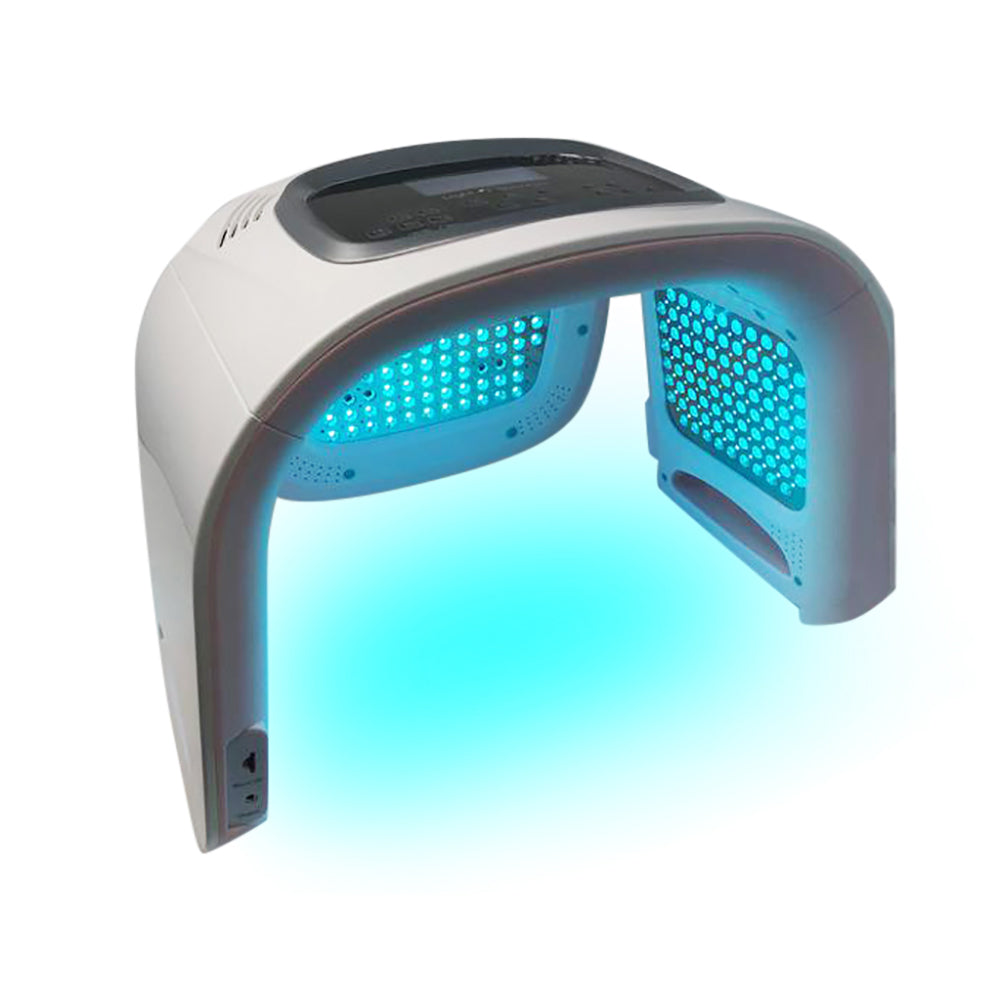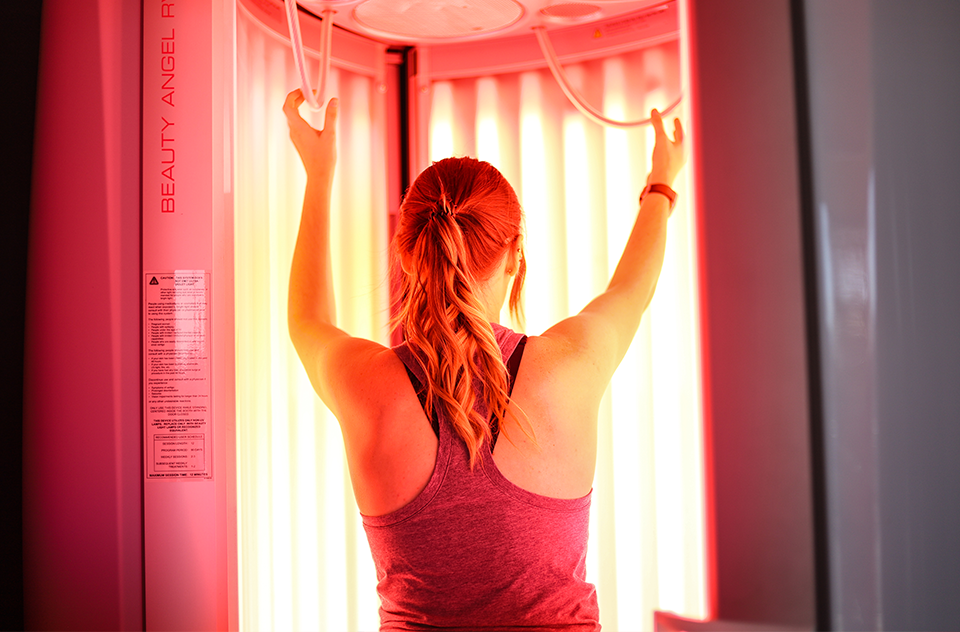Originating the Future of Health And Wellness: A Closer Check Out Photobiomodulation
Wiki Article
Opening the Potential of Photobiomodulation: A Promising Method for Therapeutic Treatment
Are you curious regarding the possibility of photobiomodulation for therapeutic intervention? By targeting certain cellular processes, photobiomodulation has revealed potential in speeding up injury recovery, decreasing discomfort, and promoting tissue regrowth. In this intro, we will check out the devices of activity, applications in medicine, and the present proof supporting the effectiveness of photobiomodulation.Understanding Photobiomodulation
To comprehend photobiomodulation, you require to grasp the idea of exactly how light treatment can directly influence cellular processes in your body. Photobiomodulation, likewise known as low-level light treatment, is a non-invasive therapy that makes use of specific wavelengths of light to stimulate biochemical responses in your cells. When revealed to these light wavelengths, your cells soak up the power and transform it into cellular power, referred to as adenosine triphosphate (ATP) This boost in ATP production results in a cascade of cellular feedbacks, consisting of boosted metabolic rate, boosted flow, and boosted production of collagen and other healthy proteins.The healing impacts of photobiomodulation are far-reaching and have actually been studied thoroughly in different medical areas. It has shown encouraging cause advertising tissue repair and regrowth, decreasing inflammation, alleviating pain, and boosting wound recovery. Photobiomodulation has been located to have a favorable impact on neurological problems, such as traumatic mind injury and stroke, by stimulating neural task and promoting neuroplasticity.
Unlike other therapies, photobiomodulation does not trigger or create any type of warm tissue damage. It is essential to note that photobiomodulation ought to be administered by trained professionals or according to the manufacturer's instructions to ensure optimum outcomes and security.

Systems of Activity
In understanding the systems of activity, you will discover exactly how photobiomodulation straight influences cellular procedures through particular biochemical responses. When light is applied to the body, it is taken in by chromophores, such as cytochrome c oxidase and flavins, which exist in the mitochondria. This absorption leads to a cascade of occasions that inevitably result in cellular modifications.Among the key systems of activity is the excitement of ATP production. Photobiomodulation enhances the activity of cytochrome c oxidase, an essential enzyme in the mitochondria that is associated with the electron transportation chain. This increased activity results in the manufacturing of even more ATP, the main energy currency of the cell. Because of this, cellular metabolic rate is enhanced, promoting tissue fixing and regeneration.
Moreover, photobiomodulation has been shown to regulate mobile signaling paths. It activates various growth factors and signaling molecules, such as nitric oxide and responsive oxygen varieties, which play crucial functions in processes like inflammation, cell, and angiogenesis spreading. These signaling paths contribute to the therapeutic effects of photobiomodulation, advertising tissue healing and reducing discomfort and inflammation.
Applications in Medicine
Discover the wide-ranging applications of photobiomodulation in medication. Photobiomodulation, likewise known as low-level light treatment, is a non-invasive therapy that uses light to boost mobile processes and advertise healing. In medication, this method has revealed appealing outcomes across numerous fields.Among the main applications of photobiomodulation is in discomfort monitoring. photobiomodulation therapy. It has actually been used to relieve both chronic and intense pain, consisting of musculoskeletal conditions, neuropathic discomfort, and post-operative pain. By targeting the afflicted location with particular wavelengths of light, photobiomodulation can lower inflammation, advertise tissue repair service, and provide relief
In addition, photobiomodulation has shown possible in wound healing. It can increase the click site recovery process by improving cell spreading, promoting angiogenesis, and minimizing mark tissue formation. This has substantial implications in the treatment of chronic injuries, such as diabetic person ulcers and pressure sores.
In dermatology, photobiomodulation has been made use of for its anti-inflammatory and regenerative impacts. It can enhance the look of marks, minimize acne sores, and stimulate hair growth in conditions like androgenetic alopecia.
In addition, photobiomodulation has actually shown promise in neurorehabilitation. It can boost cognitive function, improve motor recovery, and help in the therapy of neurodegenerative conditions like Alzheimer's and Parkinson's.
Clinical Evidence and Research Findings

In the field of bone and joint disorders, photobiomodulation has been located to reduce pain and swelling, improve variety of activity, and accelerate tissue repair service. Studies have demonstrated its efficacy in treating problems such as osteo arthritis, tendinopathies, and muscle stress. Furthermore, photobiomodulation has actually revealed favorable effects on wound healing by promoting collagen fibroblast, angiogenesis, and synthesis proliferation. This makes it an important device in the administration of persistent injuries, diabetic person abscess, and medical lacerations.
Additionally, research study has shown that photobiomodulation can have neuroregenerative and neuroprotective results. It has been found to improve cognitive feature, minimize neuroinflammation, and enhance neuronal survival and synaptic plasticity. This has important effects for the therapy of neurological conditions such as Alzheimer's disease, Parkinson's condition, and stroke.
Future Instructions and Prospective Challenges
Moving forward, it is crucial to consider the future instructions and potential visit difficulties bordering the use of photobiomodulation as a healing intervention. Currently, there is no agreement on the optimal wavelength, intensity, period, and frequency of photobiomodulation treatment.An additional essential future instructions is the growth of cost-efficient and portable photobiomodulation devices. While present tools work, they are commonly cumbersome, expensive, and need specialist guidance - pbm light therapy. The growth of user-friendly and budget friendly tools would significantly boost availability to this therapy, allowing more people to gain from its possible restorative impacts
In addition, future study needs to concentrate on clarifying the systems underlying photobiomodulation. Regardless of its growing popularity, the exact devices through which photobiomodulation applies its restorative impacts are not completely understood. Understanding these mechanisms would certainly not just improve our understanding of the therapy yet additionally help in the advancement of more targeted and reliable treatments.
Nevertheless, there are also potential obstacles that require to be dealt with. photobiomodulation laser. These consist of the requirement for standardized methods, the demand for well-designed professional trials with larger example sizes, and try this web-site the demand for long-lasting follow-up studies. Governing and security factors to consider should be taken right into account to guarantee the secure and efficient usage of photobiomodulation in clinical method.
Final Thought
Finally, photobiomodulation holds fantastic guarantee as a restorative intervention in medicine. Its systems of action and medical evidence suggest its potential for treating various conditions. Further study is required to totally comprehend its benefits and deal with any potential obstacles. With continuous research studies and improvements in this field, photobiomodulation has the potential to open brand-new opportunities for enhancing patient end results.Are you interested about the possibility of photobiomodulation for restorative treatment? By targeting certain cellular procedures, photobiomodulation has revealed potential in increasing wound recovery, minimizing pain, and advertising tissue regrowth.Additionally, photobiomodulation has actually revealed potential in injury recovery.Moving forward, it is important to consider the future directions and potential challenges bordering the usage of photobiomodulation as a restorative intervention. With ongoing researches and developments in this area, photobiomodulation has the potential to unlock new opportunities for enhancing person outcomes.
Report this wiki page